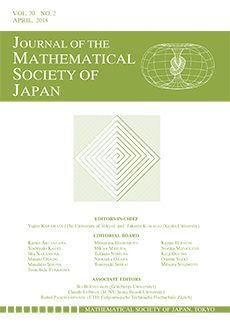Abstract
Espinosa and Moll [2], [3] studied “the Hurwitz transform” meaning an integral over [0, 1] of a Fourier series multiplied by the Hurwitz zeta function , and obtained numerous results for those which arise from the Hurwitz formula. Ito's recent result [4] turns out to be one of the special cases of Espinosa and Moll's theorem. However, they did not give rigorous treatment of the relevant improper integrals.
In this note we shall appeal to a deeper result of Mikolás [9] concerning the integral of the product of two Hurwitz zeta functions and derive all important results of Espinosa and Moll. More importantly, we shall record the hidden and often overlooked fact that some novel-looking results are often the result of “duplicate use of the functional equation”, which ends up with a disguised form of the original, as in the case of Johnson's formula [5]. Typically, Example 9.1 ((1.12) below) is the result of a triplicate use because it depends not only on our Theorem 1, which is the result of a duplicate use, but also on (1.3), the functional equation itself.
Citation
Masahiro HASHIMOTO. Shigeru KANEMITSU. Hai-Long LI. "Examples of the Hurwitz transform." J. Math. Soc. Japan 61 (3) 651 - 660, July, 2009. https://doi.org/10.2969/jmsj/06130651
Information





